Bethany A. Teachman
AudioInsight: Detecting Social Contexts Relevant to Social Anxiety from Speech
Jul 19, 2024

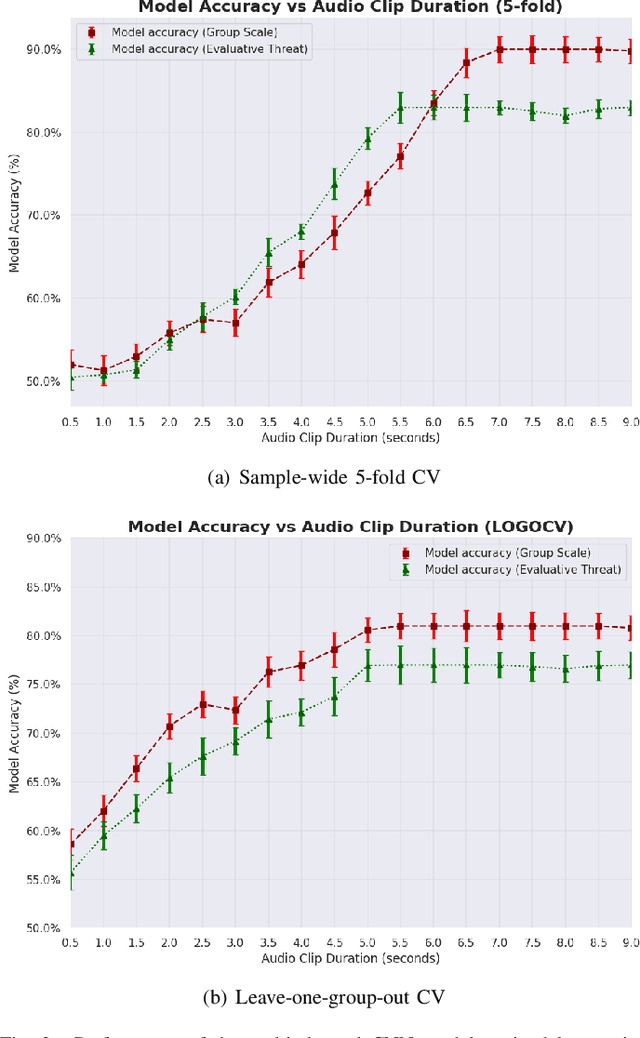
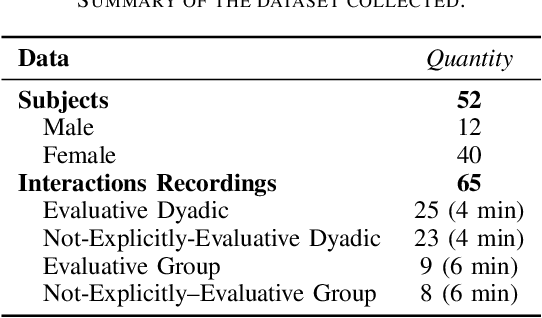
Abstract:During social interactions, understanding the intricacies of the context can be vital, particularly for socially anxious individuals. While previous research has found that the presence of a social interaction can be detected from ambient audio, the nuances within social contexts, which influence how anxiety provoking interactions are, remain largely unexplored. As an alternative to traditional, burdensome methods like self-report, this study presents a novel approach that harnesses ambient audio segments to detect social threat contexts. We focus on two key dimensions: number of interaction partners (dyadic vs. group) and degree of evaluative threat (explicitly evaluative vs. not explicitly evaluative). Building on data from a Zoom-based social interaction study (N=52 college students, of whom the majority N=45 are socially anxious), we employ deep learning methods to achieve strong detection performance. Under sample-wide 5-fold Cross Validation (CV), our model distinguished dyadic from group interactions with 90\% accuracy and detected evaluative threat at 83\%. Using a leave-one-group-out CV, accuracies were 82\% and 77\%, respectively. While our data are based on virtual interactions due to pandemic constraints, our method has the potential to extend to diverse real-world settings. This research underscores the potential of passive sensing and AI to differentiate intricate social contexts, and may ultimately advance the ability of context-aware digital interventions to offer personalized mental health support.
Personalized State Anxiety Detection: An Empirical Study with Linguistic Biomarkers and A Machine Learning Pipeline
Apr 19, 2023Abstract:Individuals high in social anxiety symptoms often exhibit elevated state anxiety in social situations. Research has shown it is possible to detect state anxiety by leveraging digital biomarkers and machine learning techniques. However, most existing work trains models on an entire group of participants, failing to capture individual differences in their psychological and behavioral responses to social contexts. To address this concern, in Study 1, we collected linguistic data from N=35 high socially anxious participants in a variety of social contexts, finding that digital linguistic biomarkers significantly differ between evaluative vs. non-evaluative social contexts and between individuals having different trait psychological symptoms, suggesting the likely importance of personalized approaches to detect state anxiety. In Study 2, we used the same data and results from Study 1 to model a multilayer personalized machine learning pipeline to detect state anxiety that considers contextual and individual differences. This personalized model outperformed the baseline F1-score by 28.0%. Results suggest that state anxiety can be more accurately detected with personalized machine learning approaches, and that linguistic biomarkers hold promise for identifying periods of state anxiety in an unobtrusive way.
Wearable Sensor-based Multimodal Physiological Responses of Socially Anxious Individuals across Social Contexts
Apr 03, 2023

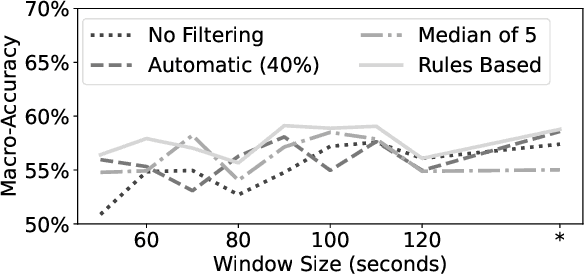
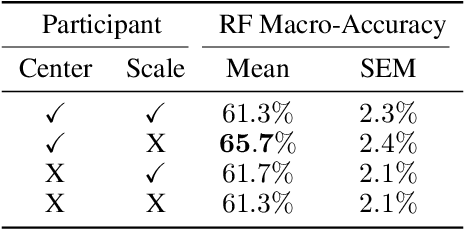
Abstract:Correctly identifying an individual's social context from passively worn sensors holds promise for delivering just-in-time adaptive interventions (JITAIs) to treat social anxiety disorder. In this study, we present results using passively collected data from a within-subject experiment that assessed physiological response across different social contexts (i.e, alone vs. with others), social phases (i.e., pre- and post-interaction vs. during an interaction), social interaction sizes (i.e., dyadic vs. group interactions), and levels of social threat (i.e., implicit vs. explicit social evaluation). Participants in the study ($N=46$) reported moderate to severe social anxiety symptoms as assessed by the Social Interaction Anxiety Scale ($\geq$34 out of 80). Univariate paired difference tests, multivariate random forest models, and follow-up cluster analyses were used to explore physiological response patterns across different social and non-social contexts. Our results suggest that social context is more reliably distinguishable than social phase, group size, or level of social threat, but that there is considerable variability in physiological response patterns even among these distinguishable contexts. Implications for real-world context detection and deployment of JITAIs are discussed.
Offline Contextual Multi-armed Bandits for Mobile Health Interventions: A Case Study on Emotion Regulation
Aug 21, 2020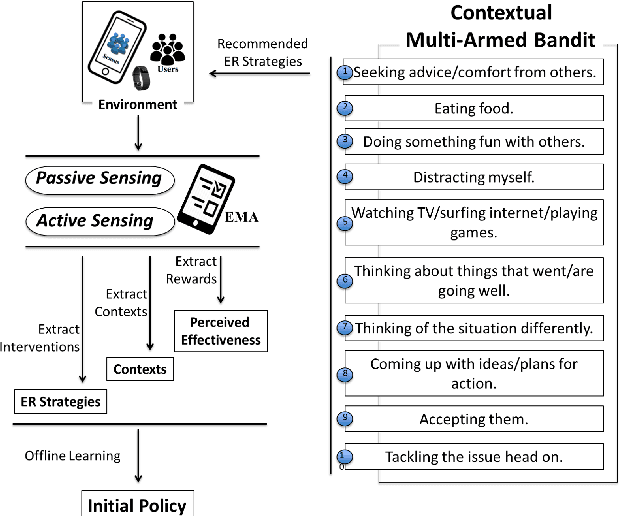
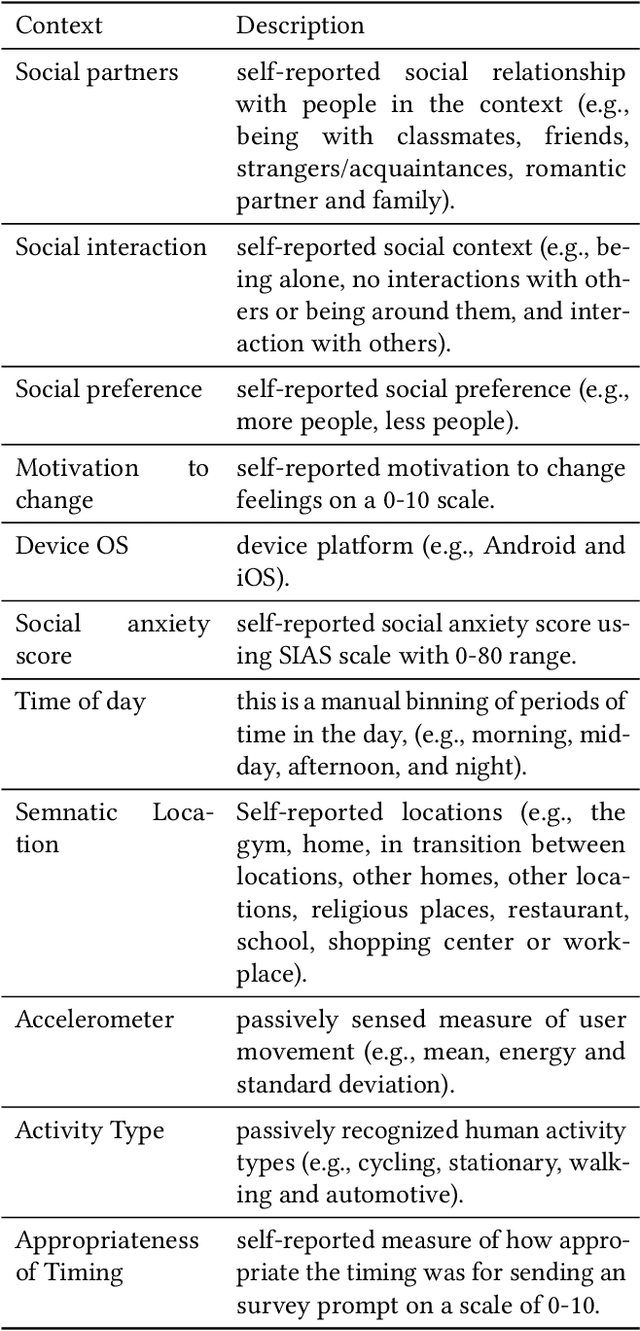

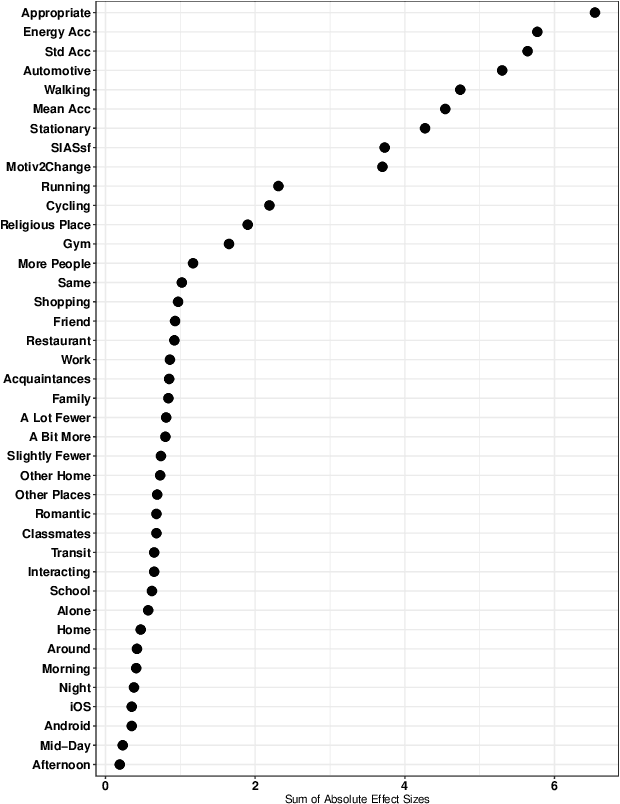
Abstract:Delivering treatment recommendations via pervasive electronic devices such as mobile phones has the potential to be a viable and scalable treatment medium for long-term health behavior management. But active experimentation of treatment options can be time-consuming, expensive and altogether unethical in some cases. There is a growing interest in methodological approaches that allow an experimenter to learn and evaluate the usefulness of a new treatment strategy before deployment. We present the first development of a treatment recommender system for emotion regulation using real-world historical mobile digital data from n = 114 high socially anxious participants to test the usefulness of new emotion regulation strategies. We explore a number of offline contextual bandits estimators for learning and propose a general framework for learning algorithms. Our experimentation shows that the proposed doubly robust offline learning algorithms performed significantly better than baseline approaches, suggesting that this type of recommender algorithm could improve emotion regulation. Given that emotion regulation is impaired across many mental illnesses and such a recommender algorithm could be scaled up easily, this approach holds potential to increase access to treatment for many people. We also share some insights that allow us to translate contextual bandit models to this complex real-world data, including which contextual features appear to be most important for predicting emotion regulation strategy effectiveness.
Cluster-based Approach to Improve Affect Recognition from Passively Sensed Data
Jan 31, 2018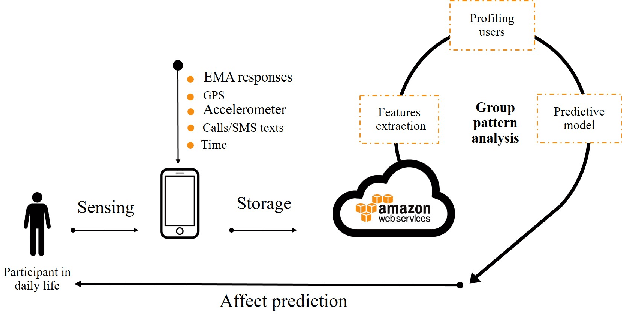
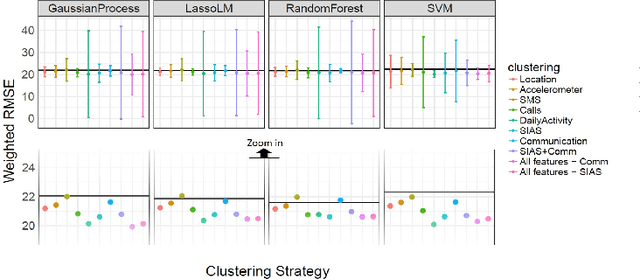
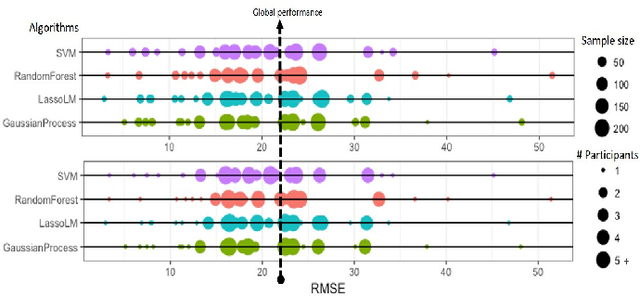
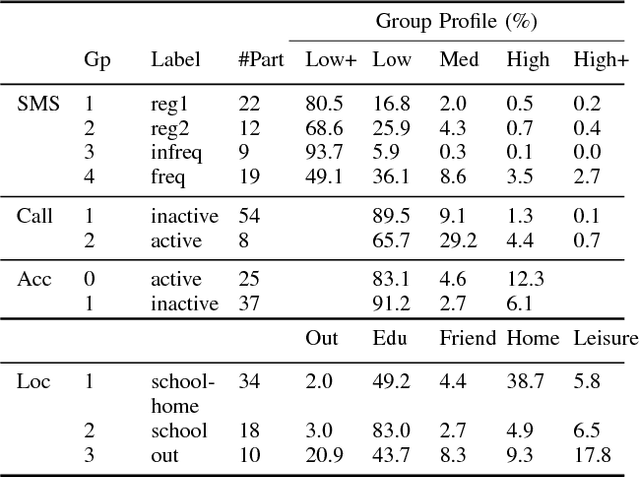
Abstract:Negative affect is a proxy for mental health in adults. By being able to predict participants' negative affect states unobtrusively, researchers and clinicians will be better positioned to deliver targeted, just-in-time mental health interventions via mobile applications. This work attempts to personalize the passive recognition of negative affect states via group-based modeling of user behavior patterns captured from mobility, communication, and activity patterns. Results show that group models outperform generalized models in a dataset based on two weeks of users' daily lives.
 Add to Chrome
Add to Chrome Add to Firefox
Add to Firefox Add to Edge
Add to Edge